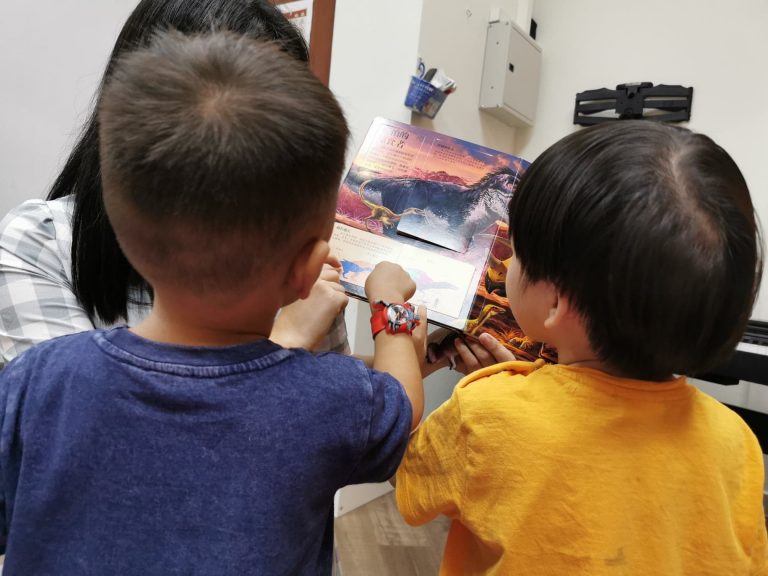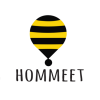
The global pandemic has brought with it a heightened sense of global anxiety. These uncertain times are certainly not easy for our children too. Within our reach is an age-old, highly effective and very easy-to-use tool – storytelling. With the science and research behind it, storytelling is more than just education or imagination; it is a great support for our children’s mental wellbeing. Read on to find out more.
While having dinner at an outdoor restaurant, we heard a cat meow. It was a “regular” at that restaurant and human customers “served” it food whenever it came. But, not these customers! Don’t get me wrong, we love cats, especially our neighbourhood cats. We would sometimes stop to pet, chat or play with them. But we were quite unfamiliar with this “regular” and were also quite scared that it would jump onto our tables in an attempt to share our food. I was afraid and so was my son. Both of us held our breath (of course not literally), and sat with our legs folded on our chairs for the rest of the dinner.
The next night, we went for dinner to at that same restaurant. Having more experience in life, I wasn’t bothered by the previous night anymore. However, it was not so for my son. He was still hearing the cat’s meows, even though the cat wasn’t there.
Since the cat was on his mind, I started telling him stories about THAT cat in his head. The stories were short and literal but varied. There were multiple storylines: he was a giant and the cat was teeny tiny; he was a troll who wanted to eat cats (he hated this!); the cat was a cute little kitten; the cat was an astronaut returning from space; we were eating slugs and cats don’t eat slugs. Through the stories, we finished our dinner in peace and he even asked to take a picture at the restaurant.

Credit: https://www.freepik.com/premium-vector/kawaii-astronaut-cat-flyingspace_6792925.htm
Because this is just how our brain works
All thanks to neuroplasticity, we can learn and relearn. Dr Dan Siegel found that “our brain continues to develop neurons and neurological pathways throughout life…has the power to transform emotions and interpersonal relationships, in addition to enabling people to master new skills.” In short, this means that our thoughts can shape our brains and our brains can shape our thoughts. Our brain is an evolving organ.
Donald Hebb, a Canadian neuropsychologist, found that “neurons that fire together, wire together”. Neurons are cells that store information, like an information centre. With every experience, thought, feeling and physical sensation, connections are made between information centres, forming a network of pathways, quite like an MRT network. The preexisting pathways enable our brains to make connections quickly, without conscious thoughts. For my son; the first dinner that night had already connected “cat at the restaurant” with “danger”.

Credit: www.biglifejournal.com
Through the stories told, there were new ways of connecting to the cat in the restaurant. Instead of going down the path of “cat in the restaurant is dangerous”, we built connections to new possibilities through humour, adventure and play. Because he was not going down last night’s path of perceived danger, his body was relaxed, he ate well; fear and anxiety transformed into laughter and wonder.
Stories that support our new “norm”
A fear that starts in the head remains in the head. We are not able to “unthink” a thought; like a huge elephant in a small room, we can’t just unsee it. But, we can build new pathways and open new doors that lead us out of there. In my new therapeutic storybook, “The Turtle who was Afraid of the Sun”, Tod the Turtle was presented with a new possibility about the Sun, which helped him to help himself overcome this fear. Now that there are new pathways in connection with the sun, “fear” is not the go-to reaction anymore.

Credit: https://playtherapyforkids.sg
The global pandemic brought with it a heightened sense of uncertainty and anxiety. And we know that prolonged feelings of fear and anxiety can debilitate normal functioning. So storytellers and play therapists have been sharing stories to help children process and cope with those sudden changes. Learning from the past, the World Health Organization (WHO) expects an “increase in the need for mental health and psychosocial support”. That is why the goal of World Mental Health Day on 10 October 2020, is to “increase investment in mental health.” To help children cope and understand COVID-19, WHO has collaborated with more than 50 organizations in the humanitarian sector to come with the story “You Hero is You”. Aimed primarily at children 6- 11 years old, this story explains how children can protect themselves and how to manage difficult emotions in this new reality

Photo Credit: IASC/Helen Patch
When you tell them a story, they learn to tell it to themselves
Stories have always been part of humans. They are key to preserving cultures and traditions, for transmitting morals, values and information, and with current studies in neuroscience, we also learn they affect our mental wellbeing. This is why stories are an important part of our toolkit in Play Therapy for kids; so that like Tod the Turtle, our clients have alternative pathways to resolve their social, emotional and behavioural issues. When we tell stories to children, they learn to tell it to themselves.
Recently, I found a poem my son wrote on his notebook – “There is the 4-eyed tree monster, I see it, I hear it, but I do not feel it. It is in my mind! Ooooo.” He wrote this to help himself remember and regulate his fear, for times when there is no real danger and when he knows it is the “Cat in the Head”.

Andrina Loo
Mother, Therapeutic Play Practitioner and author of children’s therapeutic story “The Turtle
who was afraid of the Sun”
Hommeet
- Hommeet is a trusted online community marketplace where people can list, discover, and book fun family activities. We connect families through meaningful learning and play activities in homely and supportive environment.
Related Posts
Playing Her Way to Early Childhood Education
Cultivate Creativity with Your Children Through Art

